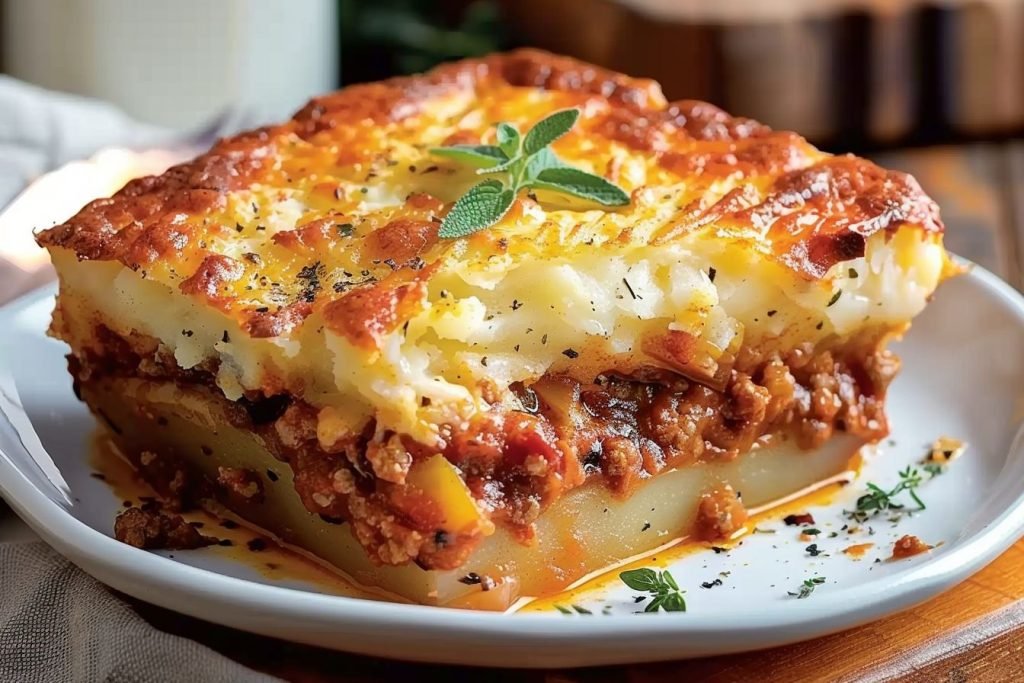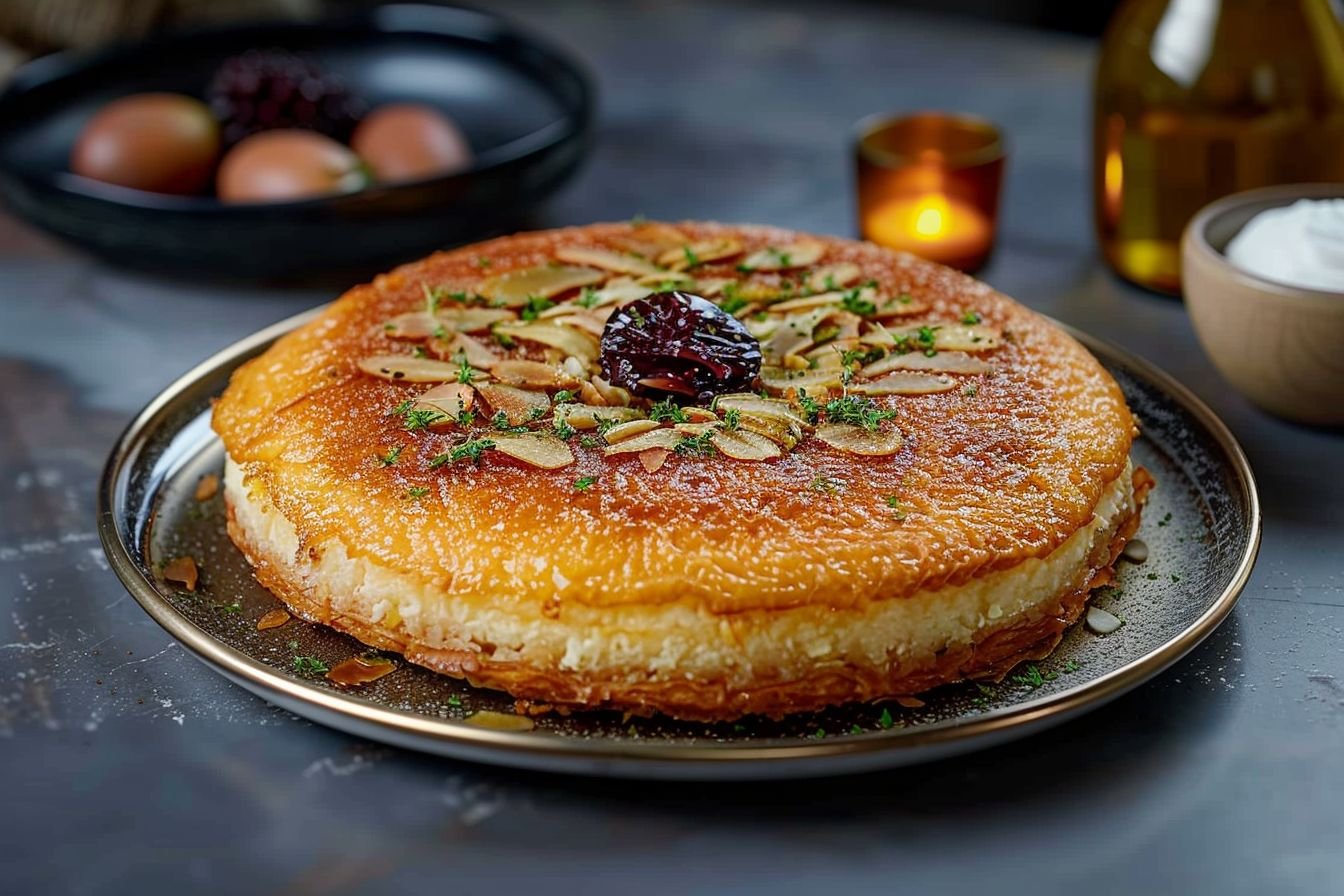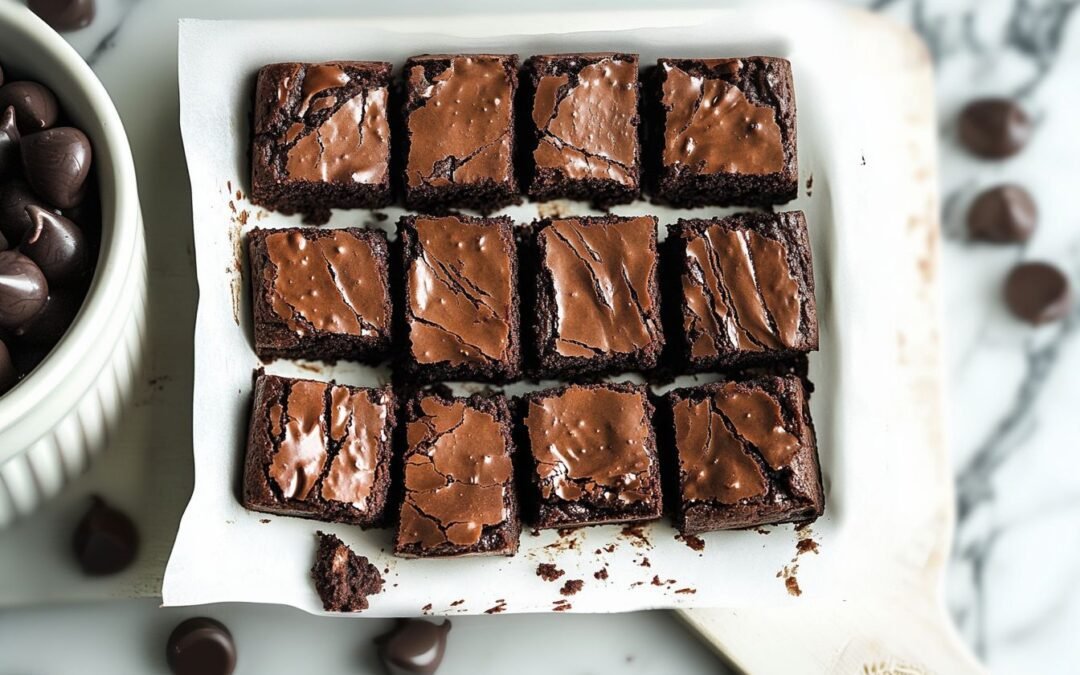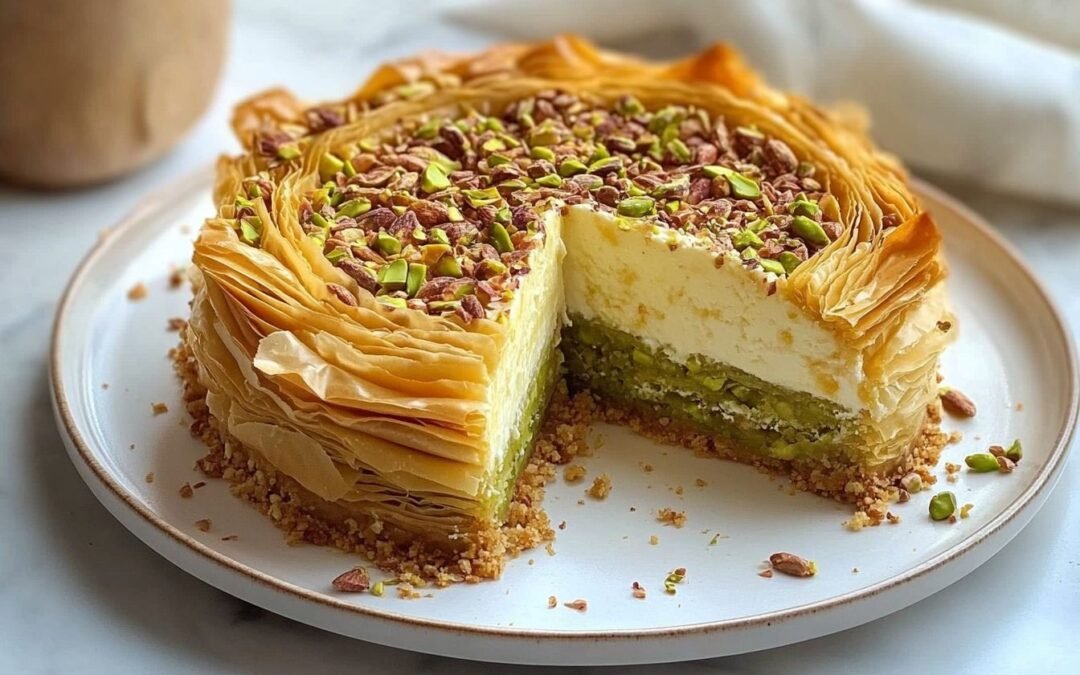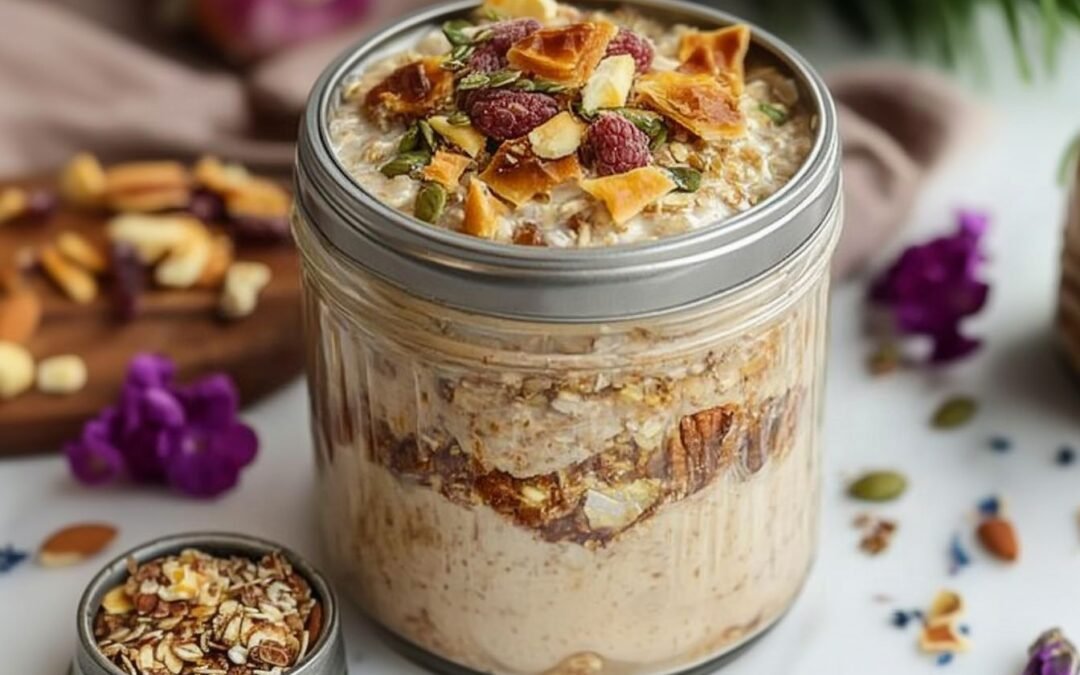Kunafa with custard filling is a Middle Eastern pastry made with vermicelli dough, clarified butter, and a sweet, creamy custard filling. The result is a deliciously rich and indulgent treat that is perfect for any occasion.
To make it, you’ll need a few key ingredients. First, you’ll need vermicelli, which is a type of thin, spaghetti-like noodle. You’ll also need clarified butter, milk, sugar, and vanilla custard mix. To finish off the dish, you’ll need sugar syrup, crushed pistachios, and almonds. While the ingredient list may seem long, the recipe is quite simple and easy to follow.
History of Kunafa
Origin of Kunafa
Kunafa is believed to have originated in the city of Nablus. It was first mentioned in the 10th century by the famous Arab geographer, Al-Muqaddasi. The original Kunafa was made with shredded phyllo dough, cheese, and syrup. Over time, variations of kunafa emerged, with different regions adding their unique twist to the recipe.
Evolution of Custard Filling
The traditional kunafa recipe has evolved over the years, and custard filling has become a popular addition. The custard filling is made with milk, sugar, and cornstarch, and is used to replace the cheese filling in the original recipe. This variation has become especially popular in Egypt, where it is known as “kunafa with cream.”
In recent years, kunafa has gained popularity in other parts of the world and has been adapted to suit different tastes. In Turkey, for example, kunafa is often served with pistachios and honey syrup, while in Lebanon, it is sometimes made with semolina dough instead of phyllo.
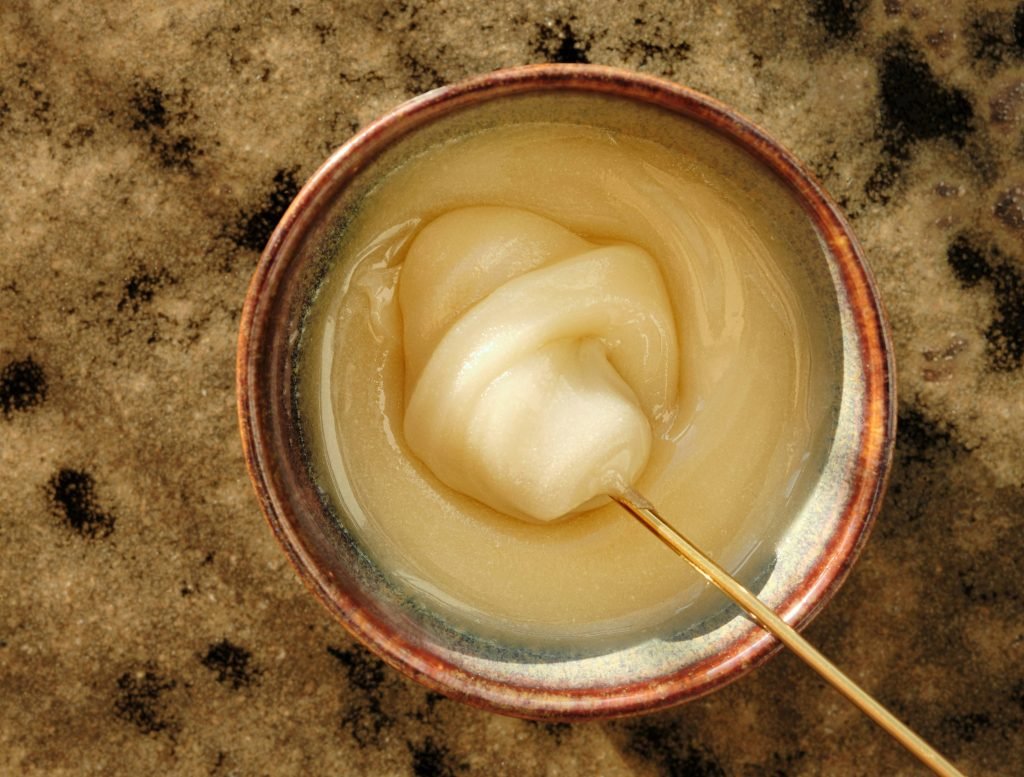
Ingredients:
- 500 g of vermicelli
- 250 g of clarified butter
- 500 ml of milk
- 100 g of sugar
- 50 g of vanilla custard mix (Rafhan or similar)
- 450 ml of sugar syrup
- 50 g of crushed pistachios
- 25 almonds
How to Make Kunafa with Custard Filling?
- Begin by softening the vermicelli in hot water for 2-3 minutes. Drain thoroughly and proceed to fry them in ghee until both sides achieve a golden brown hue. Repeat this process to create enough discs for assembly, as two are required per kunafa.
- Initiate the custard by bringing milk to a boil in a saucepan. Subsequently, add sugar and simmer for a brief period. To prevent lumps, prepare the vanilla custard mix with water and then gradually incorporate it into the hot milk while stirring continuously. Cook over medium heat until the custard reaches a thickened consistency. Finally, remove from heat and allow to cool.
- Generously spread the cooled custard between two of the prepared vermicelli discs.
- Drench the kunafa with lukewarm sugar syrup.
- Let the kunafa rest for 10 minutes, then gently press down a few times to facilitate syrup absorption. Conclude by adorning your creation with khoya, pistachios, and almonds.
Serving and Storage
Cutting and Serving
Once you have prepared this dessert, it is time to serve it to your guests. The best way to serve it is to cut it into small square or diamond-shaped pieces. This will make it easier for your guests to eat and enjoy. You can sprinkle some powdered sugar or crushed pistachios on top of the kunafa to add some extra flavor and texture.
When serving the kunafa, it is important to make sure that it is still warm. This will ensure that the custard filling is soft and creamy, and the kunafa is crispy. You can serve it with a scoop of vanilla ice cream or a dollop of whipped cream to add some sweetness and richness.
Storing Leftovers
If you have any leftovers of the kunafa, you can store them in an airtight container in the refrigerator for up to three days. When you want to reheat the kunafa, you can place it in the oven at 350°F for 10-15 minutes, or until it is warm and crispy.
It is important to note that this kunafa should not be left at room temperature for too long, as the custard filling can spoil quickly. Therefore, it is best to store it in the refrigerator as soon as possible after serving.
Variations and Substitutions
Alternative Fillings
While custard filling is the traditional choice for kunafa, many other fillings can be used to create unique and delicious variations. Some popular options include:
- Nutella or other chocolate spreads
- Cream cheese
- Fruit preserves or compotes
- Sweetened ricotta cheese
Experiment with different fillings to find your favorite combination. You can also try mixing and matching fillings to create a layered effect.
Dietary Adjustments
If you have dietary restrictions or preferences, there are several substitutions you can make to enjoy kunafa without compromising your diet. Here are a few ideas:
- For a dairy-free version, substitute coconut milk or almond milk for the milk in the custard filling recipe.
- To reduce the sugar content, use a sugar substitute such as stevia or erythritol in place of the sugar.
- For a gluten-free version, use gluten-free phyllo dough or substitute crushed nuts for the dough.
Keep in mind that these substitutions may alter the texture and flavor of the kunafa, so be prepared to experiment to find the combination that works best for you.
Cultural Significance
Kunafa is a traditional Middle Eastern dessert that has a rich cultural significance. It is a popular dish that is served during special occasions and celebrations, such as weddings, Eid al-Fitr, and Ramadan. In this section, I will explore the cultural significance of kunafa and its regional variations.
Kunafa in Celebrations
Kunafa is a staple dessert during celebrations in the Middle East. It is often served after a big meal, and its sweet and creamy taste makes it a perfect end to a festive occasion. During weddings, kunafa is served as a symbol of prosperity and good fortune. It is also a common dessert during Ramadan, where families gather to break their fast and enjoy a sweet treat together.
Regional Variations
Kunafa has many regional variations, each with its unique twist on the classic dessert. In Egypt, kunafa is made with a creamy filling of milk and sugar, while in Israel, it is filled with a salty cheese filling. In Lebanon, kunafa is often served with rose water syrup, giving it a fragrant and floral taste while in Turkey, kunafa is made with a crunchy pastry crust and a rich pistachio filling.
Conclusion
I must say, after trying out various kunafa recipes, the kunafa with custard filling is one of my favorites. The combination of crispy shredded phyllo pastry with creamy custard filling is simply delightful.
One thing I particularly like about this recipe is how easy it is to make. With just a few simple ingredients and some basic kitchen tools, you can whip up a delicious dessert that is sure to impress your guests.
If you’re looking for a sweet and savory dessert, this is worth a try. The contrast between the crispy pastry and the creamy filling is simply amazing.
Overall, I would highly recommend trying out this recipe. Whether you’re a fan of Middle Eastern desserts or just looking for something new to try, kunafa with custard filling is sure to satisfy your sweet tooth.
By the way, this is a great dessert after savoring moussaka with yogurt béchamel.
Get this recipe now (by clicking the image below):
